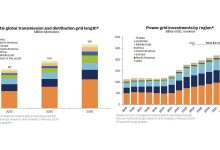Final Agreement: Combustion Engines Banned in the EU as of 2035
The European Union (EU) has decided: from 2035, the production and sale of new cars and vans with combustion engines will be banned. The link between CO2 emissions, and consequently global warming, and the use of vehicles with internal combustion engines is no longer in doubt. To reach its climate neutrality goal by 2050, the EU is taking action to reduce emissions from cars as road transport accounts for one fifth of the EU’s CO2 emissions. In June 2022, Parliament backed the European Commission’s proposal of zero emissions from new cars and vans by 2035. As an intermediary step towards zero emissions, the new CO2 standards will also require average emissions of new cars to come down by 55% by 2030, and new vans by 50% by 2030.
This is what the 27 EU Member States and MEPs decided on October 27, 2022. A world first, born out of long negotiations following a European Commission proposal in July 2021, formulated at the same time as other measures to combat climate change.
Assessing life-cycle emissions and progress towards zero-emission road mobility
Parliament succeeded in introducing methodology for the assessment and data reporting of full life-cycle CO2 emissions of cars and vans sold on the EU market. The European Commission will present this methodology by 2025, accompanied by legislative proposals where appropriate.
The Commission will also publish a report by the end of 2025, and every two years thereafter, to evaluate progress towards zero-emission road mobility. The report will cover the impact on consumers and employment, the progress in energy efficiency and affordability of zero- and low-emission vehicles as well as information on the market for second-hand vehicles.
Aligning emission limit values with real-world emissions
The Commission will monitor and report annually the gap between the emission limit values and the real-world fuel and energy consumption data, with the aim to adjust the manufacturer’s average specific emissions of CO2 as of 2030.
Funding to ensure a just transition in the automotive sector
Under the deal, existing EU funding should be channelled to transitioning to zero-emission vehicles and related technologies, and especially towards SMEs along the automotive supply chain and vulnerable regions and communities.
Other measures foreseen by the regulation include:
- The incentive mechanism for zero- and low-emission vehicles (‘ZLEV’) is revised with a higher benchmark in order to ensure that it is aligned with the current sales trends and brings affordable zero-emissions cars on the EU market;
- Manufacturers responsible for small production volumes in a calendar year (1,000 to 10,000 new cars or 1,000 to 22,000 new vans) may be granted a derogation until the end of 2035 (those responsible for less than 1,000 new vehicle registrations per year continue to be exempt);
- Existing rules for labelling of fuel economy and CO2 emissions for cars should be reviewed by the end of 2024.
“With these targets, we create clarity for the car industry and stimulate innovation and investments for car manufacturers. In addition, purchasing and driving zero-emission cars will become cheaper for consumers. I am pleased that we reached an agreement with the Council on an ambitious revision of the targets for 2030 and supported a 100% target for 2035. This is crucial to reach climate neutrality by 2050 and make clean driving more affordable,” Rapporteur Jan Huitema (Renew, NL) said.
How will the transition take place
Specifically, how will the transition be made from the ubiquitous internal combustion engine cars in Europe to a continent where they will be replaced by electric vehicles? All this in just over 10 years! Well, in order to achieve this goal, several milestones and targets have been defined, as well as economic support for this transition.
Let’s first look at carbon emissions and reduction targets. In 2030, carbon emissions must be reduced by 55% for cars and 50% for vans compared to 2021 levels. Then, in 2035, it will reach 100% for both types of vehicles. Hence the switch to electric, which is currently the only technology that meets the required criteria. Manufacturers producing fewer than 10,000 vehicles a year, mainly luxury brands such as Lamborghini, Rolls Royce, or Aston Martin, will have an extra year to comply with the regulation. In addition, the measure does not concern the second-hand market. Therefore, second-hand combustion engine vehicles should continue to be sold after 2035.
To support this transition, a European support fund for the automotive industry and its employees must be created by 2025. Because the economic and social impact of such an industrial change will be substantial, to say the least, especially for countries with a strong automotive industry.
In 2026, the European Commission will take stock of the progress of this transition to zero emissions. Important date, as targets could be redefined according to progress. In other words, it is not excluded that the original date of 2035 will change or that the carbon emission thresholds will be revised. Finally, it should be added that the agreement reached between EU countries and the European Parliament also opens the door to carbon-neutral fuels. New combustion engine vehicles could be on the market after 2035. Provided that their fuels no longer pollute.
Benefits and impediments
According to US Environmental Protection Agency (EPA), electric vehicles typically have a smaller carbon footprint than gasoline cars, even when accounting for the electricity used for charging. Electric vehicles (EVs) have no tailpipe emissions. Generating the electricity used to charge EVs, however, may create carbon pollution. The amount varies widely based on how local power is generated, e.g., using coal or natural gas, which emit carbon pollution, versus renewable resources like wind or solar, which do not. Even accounting for these electricity emissions, research shows that an EV is typically responsible for lower levels of greenhouse gases (GHGs) than an average new gasoline car. To the extent that more renewable energy sources like wind and solar are used to generate electricity, the total GHGs associated with EVs could be even lower.
In Europe, average carbon dioxide (CO2) emissions of new cars dropped by 12% in 2020 compared to the year before, according to final figures published on 26 September 2022 by the European Environment Agency. The main reason for the sharp decrease of emissions was a surge in the share of electric vehicle registrations.
The share of electric vehicle registrations tripled from 3.5% in 2019 to 11.6% in 2020 (including 6.2% full electric vehicles and 5.4% plug-in hybrid electric vehicles). Despite the shrinking overall market for new cars due to the COVID-19 pandemic, the total number of new electric cars registered in 2020 increased to over 1 million.
About 1.4 million new vans were registered in Europe in 2020 with average emissions 1.9 % lower than in 2019. The share of electric vans increased from 1.4% in 2019 to 2.3% in 2020.
The development of electric vehicles still raises a lot of questions, especially for everything related to fast charging.
Electric cars are still gaining ground. When calculating how much CO2 a car produces, we need to consider not only the CO2 emissions during use, but also the emissions from its production and disposal.
The production of an electric car is less environmentally friendly than that of an internal combustion engine car, and the level of emissions from electric vehicles varies depending on how the electricity is produced.
However, considering the average energy mix in Europe, electric cars are already proving to be cleaner than gasoline-powered vehicles. As the share of electricity from renewable sources increases in the future, electric cars will become even less harmful to the environment, especially if we consider EU plans to make batteries more sustainable.
Fleet electrification is progressing rapidly, with zero-emission models overtaking diesel models. In France, for example, the threshold of one million electric and plug-in hybrid vehicles on the road in the country has been reached, just ahead of the targets set by public authorities. On the other hand, also here, there are 70,000 charging points open to the public, a figure certainly behind the official targets (100,000 by the end of 2022), but still reflecting a 50% increase in 12 months.
“While electrification of the vehicle fleet is an essential lever, it is not sufficient to make the transition fully effective in environmental, social, and economic terms. It is also necessary that the development of electric vehicles be climate-friendly, accessible to all and limits its impact on the electricity grid,” say the French experts.
Experts also point out that while the electric car does not have a carbon-neutral footprint, it still has a lifespan two to three times shorter than a combustion engine model, at least for models with a battery capacity of 60 kWh or less.
The electric car will not replace the combustion engine vehicle entirely
“Replicating the combustion engine vehicle use model on the electric vehicle will not be enough. The electric car will not replace the combustion engine vehicle for all its uses,” warns The French Agency for Ecological Transition (ADEME).
This is not to advocate keeping the combustion engine vehicle beyond 2035, but to point out that heavy electric vehicles and large batteries could pose problems in terms of carbon impact, the rapid development of charging station networks, while considering the new needs for a well-functioning power grid.
Massive electrification plans in forced march
The electric car is not a miracle solution. Reluctant people rightly talk about the damage caused by lithium mining, which is essential for making batteries.
Moreover, the great dilemma of the electric car is twofold, and the solutions are antagonistic. The solution to the first problem is increased autonomy, partly to compensate for the lack of charging infrastructure. The solution to the second problem is to reduce prices, as these cars are still considerably more expensive than internal combustion engine cars.
To make the energy transition a success, countries are making it easier to buy electric cars (with the eco-bonus, for example) and are also supporting the use of public transport and bicycles. This leads to a disruption of people’s habits, with the car being pushed to the outskirts of cities.
Health impact
An older study by scientists at the Harvard T. H. Chan School of Public Health looks at health. The study focused mainly on PM2.5 emissions. Their accumulation darkens the sky, warms the atmosphere, and can disrupt the water cycle. In addition, these particles penetrate deep into the respiratory system and have carcinogenic effects.
The data were collected in four different years from 2008-2017. During these nine years, the evolution of vehicles has continued, and freight transport has become more intense. This study concludes that replacing internal combustion vehicles with electric cars is already starting to pay off: it promotes a reduction in pollution caused deaths. The study also considers potential savings and social impacts, including health spending.
Electric car market in Romania
Data show that there is a significant transformation of the local market in Romania. More specifically, the market share of electric cars registered in Romania has increased from 2% to over 5%. During the whole of 2020, 2,846 electric cars were registered in Romania and 6,338 were registered on the local market in 2021. The increase is not only due to subsidies from the state, but also to manufacturers’ supply. Even though 2021 was marked by the coronavirus pandemic and the global microchip crisis, manufacturers continued their launches and managed to bring many of the announced 2020 premieres to showrooms. As for 2022, manufacturers have brought even more electric cars to market. Data from the Association of Automobile Manufacturers and Importers (APIA) shows that overall ‘green’ cars performed well, with purchases in this category almost doubling in 2022 (+89%) compared to the same period last year. Against this backdrop, sales of 100% electric cars increased by 304.9% and plug-in hybrids by 53.7%.







